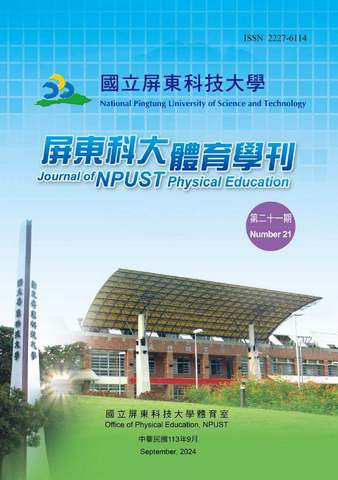 |
 本站僅提供期刊文獻檢索。 本站僅提供期刊文獻檢索。
【月旦知識庫】是否收錄該篇全文,敬請【登入】查詢為準。
 最新【購點活動】 最新【購點活動】
|
| 篇名 |
增加離心收縮階段負荷對肌力與爆發力表現的影響及生理機制之探討
|
| 並列篇名 |
Effects of Increasing the Load of Eccentric Contraction on Muscle Development and Its Physiological Mechanism |
| 作者 |
劉俞宣 |
| 中文摘要 |
傳統的阻力訓練中,包括離心收縮與向心收縮的動作執行,通常肌肉在進行離心與向心收縮時的過程皆承載相同的重量負荷,(dynamic constant external resistance,DCER)。先前的研究指出離心收縮相較於向心收縮能產生更大的力量。近年來開始有教練及專家學者在進行阻力運動時,增加離心收縮階段的重量負荷,且在向心收縮階段維持原本的重量負荷(dynamic accentuated external 10 resistance,DAER),試圖透過DAER訓練方式給予神經肌肉系統更大的刺激,期望能產生較佳的肌肉生理適應,以改善肌力與爆發力的表現。本文藉由文獻的蒐集,探討DAER訓練與傳統DCER訓練對於肌力與爆發力的提升何者具有較佳的訓練效益,綜合文獻整理及蒐集的研究結果發現:一、單次的DAER訓練對肌力表現的結果並不一致,但長期下來所觀察到的肌力表現,卻發現了當離心收縮負荷設定介於105-120%向心1RM時,DAER訓練顯著優於DCER的訓練。二、DAER訓練對爆發力(power)的表現上,發現當離心收縮負荷設定為70-80%向心1RM時,能引起較高的功率峰值。未來的研究可以針對不同的族群、性別、訓練背景及不同肌群,加以探討DAER訓練對於改善肌肉表現上的效益,並且試圖界定出最適當的離心收縮負荷範圍,提供給教練或選手在訓練上所參考的依據。
In resistance training, the muscles usually carry same loads during the process of eccentric contraction and concentric contraction (called as dynamic constant external resistance, DCER training). Previous studies have indicated that eccentric contraction produce greater strength than concentric contraction. In recent years, the coaches, experts, and scholars have begun to adopt the method of increasing the loads in the eccentric contraction phase during resistance exercise, while maintaining the original loads in the concentric phase (called as dynamic accentuated external resistance, DAER training). With the greater stimulation to the neuromuscular system through DAER training method, better muscle physiological adaptation to improve the performance of muscle strength were expected. Therefore, this article will explore either the DAER training or traditional DCER training would improve the muscle strength and explosiveness more effectively. After synthesis all literature and study collected, we found the following facts. Firstly, the results of muscle strength performance of a single DAER exercise were not consistent, while DAER had significantly better effects on muscle strength than DCER when the eccentric contraction loads were set to 105-120% of concentric 1 RM. Secondly, as to the performance of power, we found that better power peaks would be elicited when the eccentric contraction loads were set to 70-80% of concentric 1 RM. Studies about the benefits of DAER on improving muscle fitness in different gender, ages, training status or muscle groups needs further investigating in the future, also, finding out the proper range of eccentric contraction loads might provide references in training for coaches and athletes. |
| 英文摘要 |
In resistance training, the muscles usually carry same loads during the process of eccentric contraction and concentric contraction (called as dynamic constant external resistance, DCER training). Previous studies have indicated that eccentric contraction produce greater strength than concentric contraction. In recent years, the coaches, experts, and scholars have begun to adopt the method of increasing the loads in the eccentric contraction phase during resistance exercise, while maintaining the original loads in the concentric phase (called as dynamic accentuated external resistance, DAER training). With the greater stimulation to the neuromuscular system through DAER training method, better muscle physiological adaptation to improve the performance of muscle strength were expected. Therefore, this article will explore either the DAER training or traditional DCER training would improve the muscle strength and explosiveness more effectively. After synthesis all literature and study collected, we found the following facts. Firstly, the results of muscle strength performance of a single DAER exercise were not consistent, while DAER had significantly better effects on muscle strength than DCER when the eccentric contraction loads were set to 105-120% of concentric 1 RM. Secondly, as to the performance of power, we found that better power peaks would be elicited when the eccentric contraction loads were set to 70-80% of concentric 1 RM. Studies about the benefits of DAER on improving muscle fitness in different gender, ages, training status or muscle groups needs further investigating in the future, also, finding out the proper range of eccentric contraction loads might provide references in training for coaches and athletes. |
| 起訖頁 |
63-72 |
| 刊名 |
屏東科大體育學刊 |
| 期數 |
201809 (9期) |
| 出版單位 |
國立屏東科技大學體育室
|
| 該期刊-上一篇 |
援中港濕地公園的遊憩體驗、志工導覽解說及社區依附 |
| |
|
新書閱讀
最新影音
優惠活動
|